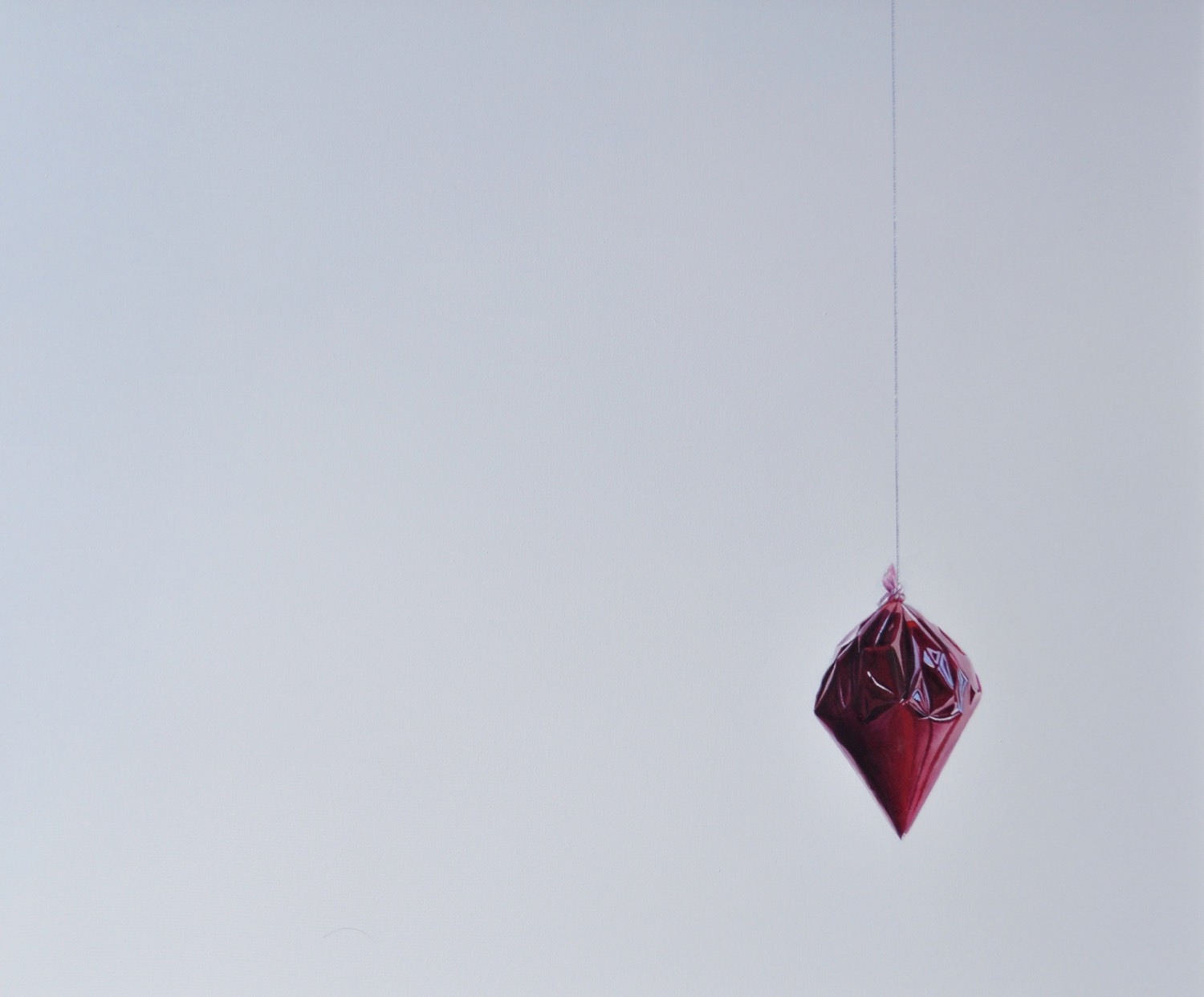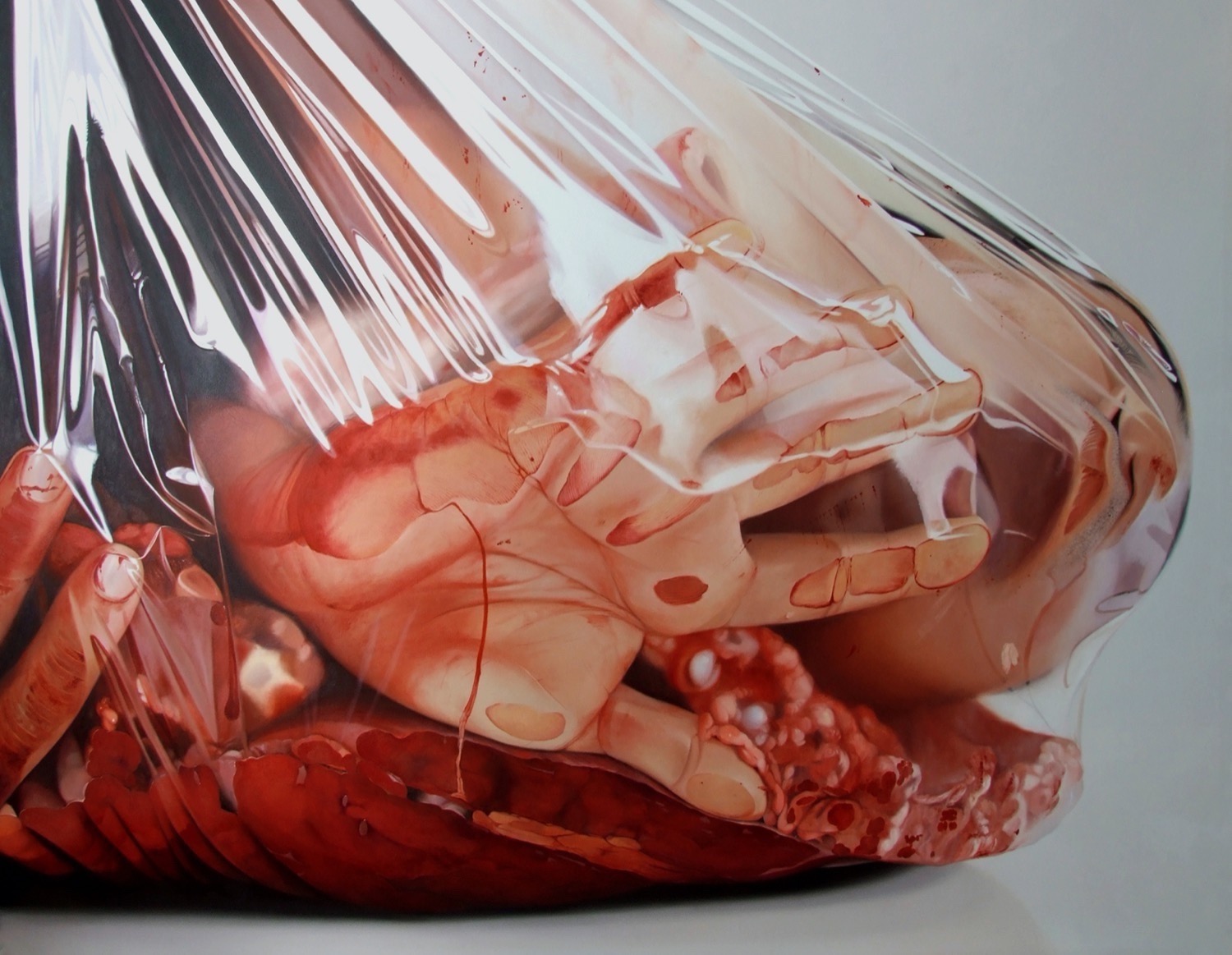How would you describe your work?
My work relates to contemporary issues of humanity. In this sense, I propose to present, in images, what makes us human or distances us from this condition. Initially I try to present an idea from a certain interpretation, because the images are not exactly what they are presented, they are visual metaphors. My creative process starts from a triad ( Simulation of the Act/Fiction – Photography – Painting). I start with the simulacrum of an act or scene in the studio, where I resort to fiction, then I use photographic processes to capture some images, which finally ends up in the universe of Painting where the work takes place. I create a scene with a certain human character, in a second triad (the Body – the Self – the Being) is established in the search for the image / body, and sometimes I use my own body and / or a repertoire of psychic conditions as raw material. However, the Self (identity) is present in an image, but it is traversed by something until it reaches the Being. My Image / Body becomes in the painting a kind of avatar for the Other, even though it starts from conditions of a universe In particular, I always run into the common sense of Human Nature.
What is the reason you have chosen to represent these particular themes in your works?
Each completed work is the result of a series of steps and reflections that I choose to condense in an image painted in oil on canvas. When I use my body, for example, in some scenes, this choice is made by technical strategies, it is not an autobiographical reference. I think of a body-image, a kind of avatar, where the observer can cross these images and reflect on the existential relationships: man-animal, life-death, civilization-barbarism, order-chaos, among others. My work starts from an idealised image, thought to exist in painting, that’s why I don’t use pre-existing images, I create images so that they become paintings. These scenes are constructed with real elements like blood, for example, as I need to observe the “redness” of red to act as a painter. The pulse of that colour drives my actions as an artist when I apply the paint to the canvas. For me, painting is a place for daydreaming in images, more than a support.
Do you paint from your imagination? What is the technique you use with your models/objects?
Image, imaginary and imagination are part of my painting process because imagination is the result of visual data of reality and interpretations and memories that are part of my life. When I use my imagination to create what we could call metaphors of a body-image, I believe it deals with strategies that I use to bring the private universe and common sense closer to human nature. As I present these images in the painting format, I intend to draw attention to the actions, often incomprehensible, that man has been facing in various parts of the world, whether they are close, distant or in a virtual state.
 https://www.nastymagazine.com/wp-content/uploads/2021/02/Viktor-Mattsson-Nasty-Magazine-005.jpg
999
1500
admin
https://www.nastymagazine.com/wp-content/uploads/2015/02/new-logo-basker-WHITE4.png
admin2021-02-25 15:25:112021-02-24 09:36:13Viktor Mattsson / Devil in the black dress
https://www.nastymagazine.com/wp-content/uploads/2021/02/Viktor-Mattsson-Nasty-Magazine-005.jpg
999
1500
admin
https://www.nastymagazine.com/wp-content/uploads/2015/02/new-logo-basker-WHITE4.png
admin2021-02-25 15:25:112021-02-24 09:36:13Viktor Mattsson / Devil in the black dress














